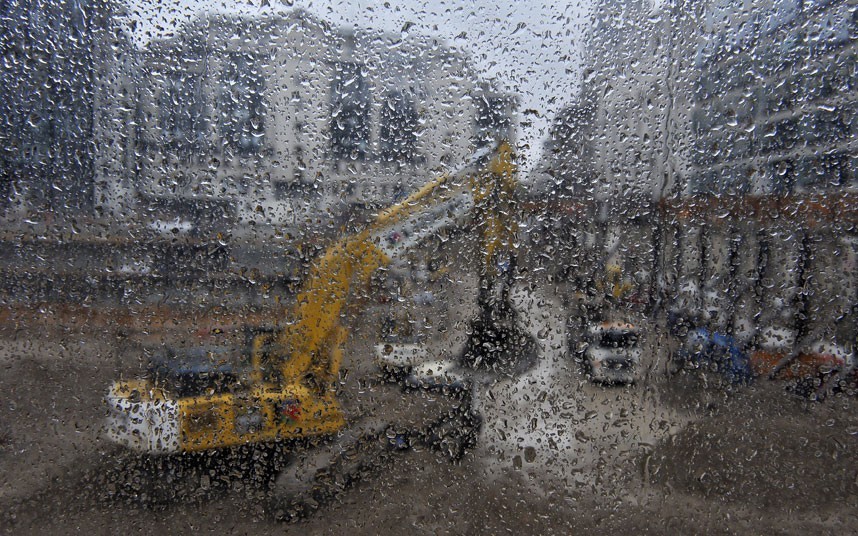What is Safety Hazards?
Safety Hazards in construction refer to any potential source of harm or adverse health effect. These hazards can range from fall risks and electrical dangers to hazardous materials exposure and heavy machinery accidents. Addressing these risks is crucial to maintaining a safe working environment and preventing injuries or fatalities.
What does Safety Hazard Risk mean?
'Safety Hazard' Risk means the conditions or practices that pose a risk of injury or death to workers. These hazards are often associated with non-compliance with safety standards, insufficient safety training, or failure to use appropriate safety equipment.
Safety Hazard Risk Example
An example of safety hazards in construction is an unsecured scaffolding that leads to falls, one of the most common causes of fatal injuries in the industry. Other examples include trench collapses, electrical shocks, and being struck by construction equipment.

The History of Safety Hazards
The construction industry has historically been among the most hazardous due to the nature of the work. Over the years, mostly due to a heap of deaths, there have been significant efforts to improve safety through regulations, technologies, and practices. Safety standards continue to evolve as new risks emerge and new safety technologies become available. Government bodies have emerged, such as Safe Work Australia, who develop national policy relating to Work, Health and Safety.

Causes of Safety Hazards
Safety hazards can be caused by a variety of factors:
- Lack of Safety Training: Inadequate training on the proper safety protocols and equipment handling.
- Improper Use of Equipment: Using tools and machinery without proper precautions or for unintended purposes.
- Poor Site Management: Inadequate hazard identification, risk assessment, and control measures on site.
- Physical and Environmental Conditions: Working conditions that include extreme weather, noise, and hazardous materials.
Likelihood of Safety Hazards
The likelihood of encountering safety hazards is high in construction due to the dynamic nature of the work environments, the use of heavy machinery, and the physical demands placed on workers. Effective safety management is essential to reduce these risks.
Consequence / Impact of Safety Hazards
The consequences of safety hazards can be severe, ranging from minor injuries to fatalities. Beyond the human cost, these incidents can lead to significant financial impacts due to lost productivity, medical expenses, compensation claims, and potential legal liabilities.
Safety Hazards Clauses in Construction Contracts
Safety hazards clauses in construction contracts generally emerge as amendments to ensure safety obligations and responsibilities to the Project Owner:
- Compliance with Safety Standards: Require adherence to national or international safety standards and regulations.
- Safety Training and Equipment: Stipulate provisions for mandatory safety training and the provision of necessary safety equipment.
- Reporting and Investigating Incidents: Include requirements for reporting safety incidents and conducting thorough investigations to prevent recurrence.
- Penalties for Non-Compliance: Outline penalties for failing to adhere to safety protocols, potentially including financial penalties or termination of the contract.
Mitigations and Treatments for Safety Hazards Risk
Effective mitigation and treatment strategies for safety hazards include:
- Regular Safety Audits and Inspections: Conducting frequent safety audits and inspections to identify and rectify potential hazards.
- Continuous Safety Training: Providing ongoing training to all workers on the latest safety practices and hazard recognition.
- Investment in Safety Technology: Utilizing the latest safety technology and equipment to enhance worker safety.
- Creating a Safety Culture: Fostering a culture that prioritizes safety, encouraging workers to speak up about unsafe conditions and to take proactive steps to mitigate risks.
Risk Management and Reporting of Safety Hazards Risk
As we've seen above, there are alot of considerations when it comes to Risk Management. Implementing Risk Management and Reporting controls will make managing this risk easy, and ensure success of your Capital Project.
- Risk Management Plan: Download a free Risk Management Plan Template and put a Risk Management process in place.
- Risk Register: Download a manual Risk Register Template or use an automated Risk Register solution to track all risks, causes, consquences and mitigations.
- Reporting: Create automated Risk Reports, Project Status Reports or Dashboards for communicating with stakeholders. If you need a free Report Template, you can find some examples here.

Why take the 'Risk'? 😂 Start today with Mastt's fast, easy Risk Management solution
Replace spreadsheet risk registers instantly and unlock opportunities to complete Capital Projects earlier with reduced costs using Mastt.






















